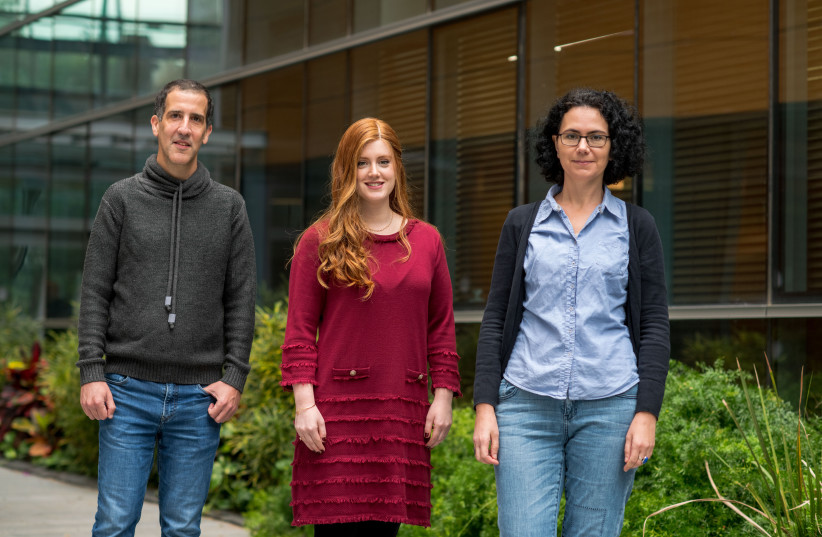Enzymes could change the chemical industry by acting as sustainable alternatives to numerous processes. As biological catalysts, enzymes can supercharge natural chemical reactions with molecular engineering.
Enzymes that are modified in this way could have long-reaching impacts, from helping to make pharmaceutical manufacturing more environmentally sustainable to breaking down agricultural waste, sewage and pollutants and turning them into food for animals.
In a new peer-reviewed study by researchers at the Weizmann Institute of Science that was published on Thursday in Science journal, a team led by Prof. Sarel Fleishman from Weizmann's Biomolecular Sciences Department, developed a computational method for designing hyperefficient active enzymes from engineered modular building blocks.
New enzymes are usually created by randomly tweaking the DNA of naturally-existing enzymes and filtering the resulting protein based on their effectiveness in a given area.
The CADENZ Method
The Weizmann team decided to generate many enzymes with diverse traits by breaking down naturally-occurring enzymes into constituent fragments that can be tweaked or combined in different combinations.
Based on parameters set by a small number of genes, the immune system produces billions of different antibodies that can combat many different microorganisms.
“Antibodies are the only family of proteins in nature known to be generated in a modular way,” said Fleishman. “Their huge diversity is achieved by recombining preexisting genetic fragments, similar to how a new kind of electronic device is assembled from preexisting transistors and processing units.”

“If we manage to boost the activity of these enzymes, they might be used for breaking down plant compounds such as xylan and cellulose into sugars, which in turn can help generate biofuels.”
Rosalie Lipsh-Sokolik
Rosalie Lipsh-Sokolik, a PhD student involved in the study, experimented with a family of enzymes that break down the cell wall component xylan in order to determine if enzymes could be developed from modular fragments made in a lab that combine into larger structures.
“If we manage to boost the activity of these enzymes, they might be used for breaking down plant compounds such as xylan and cellulose into sugars, which in turn can help generate biofuels,” said Lipsh-Sokolik. “Instead of disposing of agricultural waste, for example, we should be able to turn it into an energy source.”
Lipsh-Sokolik created an algorithm using physics-based protein design calculations with a machine-learning model to break down the different types of xylan-breaking enzyme sequences into multiple fragments and then created dozens of mutations in order to increase the compatibility of the different parts as much as possible. The algorithm then pieced together fragments into various combinations and picked the most stable encoded enzyme sequences.
The researchers then developed one million enzymes based on the computer models and found that 3,000 of them were active.
“The first time we looked at the experimental results, we were amazed,” Fleishman said. “The 0.3 percent success rate is not high, but the sheer number of different active enzymes we got was staggering. In typical protein design and engineering studies you see maybe a dozen active enzymes.”
Distinguishing features of active enzymes
The team then sought to find what molecular features make active enzymes different from inactive enzymes.
Lipsh-Sokolik used machine-learning tools to study around 100 traits characterizing enzymes and created an activity predictor from the 10 traits with the greatest potential.
She then repeated the xylan experiment with the activity predictor and ended up with some 9,000 enzymes capable of breaking down zylan and 3,000 capable of breaking down cellulose, making the experiment 10 times as successful as the initial attempt.
The Weizmann Institute noted that the team had successfully developed more potentially active enzymes than other methods were able to produce in 10 years. Moreover, these enzymes were very diverse in sequence and structure and could therefore have a wide range of applications.
“When you can create enzymes with such high levels of activity using a completely automated method that you now know is also incredibly reliable, that is really good news,” Lipsh-Sokolik said.
Fleishman said that the new method developed by the team, called CADENZ (Combinatorial Assembly and Design of Enzymes) can, in theory, be used with any family of proteins. He is looking into the use of the process in developing improved antibodies or variants of fluorescent proteins commonly used as labels in biology.
“One of my goals is to change the way people engineer enzymes, antibodies and other proteins,” he said. “Protein engineering is becoming a central part of the economy and public health: Industrial enzymes are proteins; antibodies and vaccines are also proteins. We need to be able to optimize them and to generate new ones in a robust and reliable way.”
